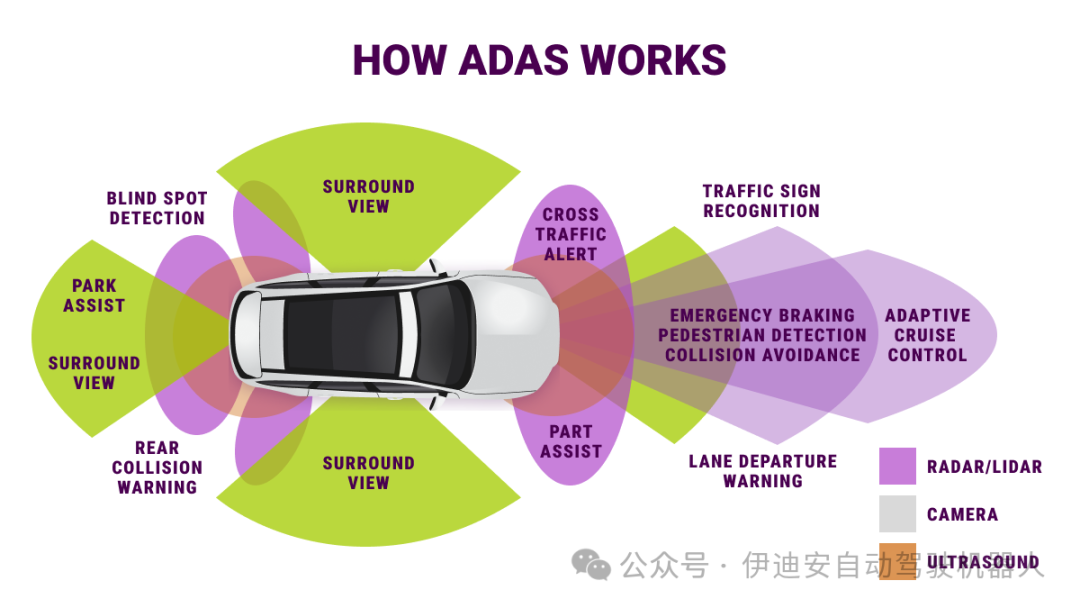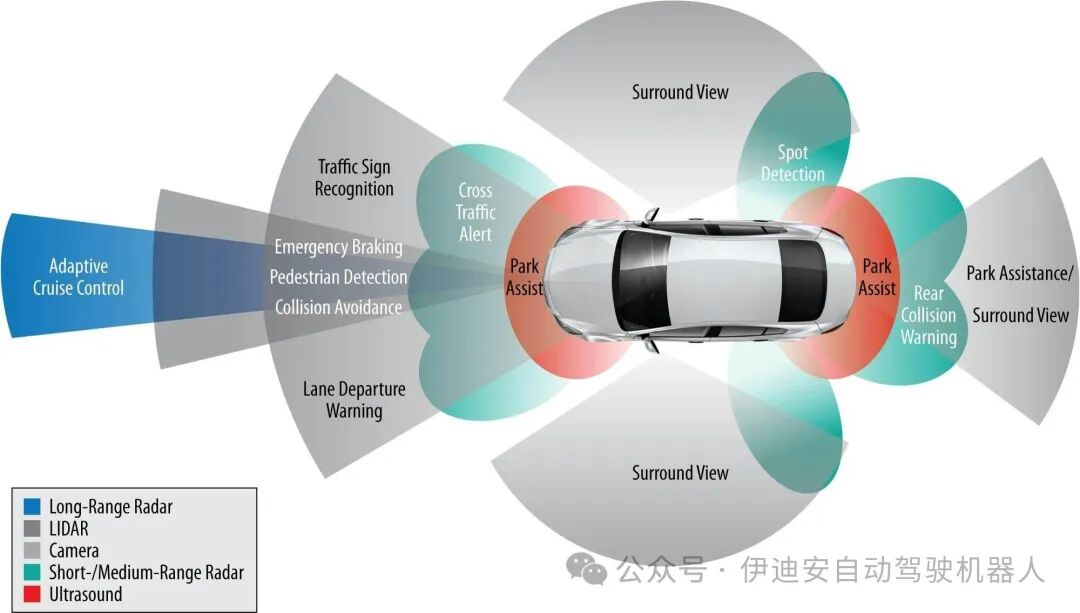Advanced Driver Assistance Systems (ADAS) are revolutionizing the automotive industry by enhancing vehicle safety, reducing accidents, and improving driving comfort. With an increasing number of regulations mandating the inclusion of ADAS features and consumer demand for safer vehicles, the market for ADAS-equipped cars is rapidly growing. Consequently, the demand for skilled professionals in this field has also significantly increased.
This article provides a comprehensive guide to help you understand ADAS, its key components, required skills, tools, career development opportunities, and how to become an expert in this thriving field. Whether you are a student, an engineer, or a professional looking to transition into the ADAS domain, this guide will equip you with the knowledge to get started and master ADAS.

Image Source: Mindy Support
What is ADAS?
ADAS refers to a set of electronic systems in vehicles designed to assist drivers, making driving safer and more comfortable. These systems rely on various sensors, cameras, radars, and control units to detect environmental conditions and provide assistance or take corrective actions.
ADAS can be divided into two main categories:
-
Passive Systems: These systems alert the driver but do not take control of the vehicle. Examples include Lane Departure Warning (LDW), Blind Spot Detection (BSD), and Traffic Sign Recognition (TSR).
-
Active Systems: These systems can intervene and take control of the vehicle in specific situations. Examples include Adaptive Cruise Control (ACC), Automatic Emergency Braking (AEB), and Lane Keeping Assistance (LKA).
With advancements in technology, ADAS is paving the way for fully autonomous driving, making expertise in this field increasingly valuable.

Image Source: Mentor Graphics
Key Components of ADAS
ADAS consists of various hardware and software components that work together to enhance vehicle safety and automation. The main components include:
01. Sensors and Cameras
Sensors and cameras form the backbone of ADAS, providing real-time data about the vehicle’s surrounding environment. The main types include:
-
Radar Sensors: Used to detect objects and measure distances, commonly used in Adaptive Cruise Control and Blind Spot Detection.
-
LiDAR: Provides high-precision 3D mapping for autonomous driving applications.
-
Ultrasonic Sensors: Used for parking assistance and short-range object detection.
-
Optical Cameras: Used for lane detection, pedestrian recognition, and road sign recognition.
-
Infrared Cameras: Enhance night vision capabilities and detect obstacles in low-light conditions.
02. Electronic Control Units (ECU)
ECUs process data from sensors and execute commands for ADAS functions. These functions include:
-
Perception ECU: Analyzes raw sensor data to detect obstacles, lanes, and traffic signs.
-
Decision ECU: Determines the necessary response (e.g., braking, acceleration, or steering adjustments).
-
Execution ECU: Executes the response by controlling vehicle components such as braking and steering.
03. Software and Algorithms
ADAS heavily relies on software to interpret sensor data and make real-time driving decisions. Core software components include:
-
Machine Learning and AI-based Perception Models
-
Sensor Fusion Algorithms for integrating multi-source data
-
Real-time Decision Algorithms
-
Path Planning and Trajectory Prediction Systems
Common ADAS Features
Modern vehicles equipped with ADAS include various advanced features that enhance safety and driving experience. Some key ADAS features include:
01. Adaptive Cruise Control (ACC): Automatically adjusts vehicle speed based on traffic conditions.
02. Automatic Emergency Braking (AEB): Detects imminent collisions and automatically applies brakes.
03. Lane Departure Warning (LDW) and Lane Keeping Assistance (LKA): Alerts the driver when unintentionally drifting out of the lane and helps maintain lane position.
04. Blind Spot Detection (BSD): Monitors and alerts the driver to vehicles in blind spots.
05. Traffic Sign Recognition (TSR): Recognizes traffic signs and displays them on the dashboard.
06. Parking Assistance and Automated Parking Systems: Assist drivers with parallel and perpendicular parking.
07. Driver Monitoring Systems (DMS): Monitors driver behavior to detect fatigue and distraction.
08. Night Vision Assistance: Enhances visibility in low-light conditions using infrared cameras.
Career Development Opportunities in ADAS
With the rapid proliferation of ADAS, various career development paths have emerged. Some key positions include:
01. ADAS Software Engineer
-
Develop perception, decision, and vehicle control algorithms.
-
Utilize programming languages such as C, C++, and Python.
02. Sensor Fusion Engineer
-
Integrate data from multiple sensors to create a comprehensive environmental model.
-
Enhance object recognition using AI and machine learning.
03. ADAS AI/Machine Learning Engineer
-
Develop deep learning models for pedestrian detection, lane recognition, and object classification.
-
Utilize frameworks such as TensorFlow and PyTorch.
04. Functional Safety Engineer (ISO 26262)
-
Ensure ADAS compliance with automotive safety standards.
-
Responsible for risk assessment and risk mitigation strategies.
05. ADAS Testing and Validation Engineer
-
Conduct Hardware-in-the-Loop (HIL), Software-in-the-Loop (SiL), and Model-in-the-Loop (MiL) testing.
-
Utilize simulation tools such as MATLAB/Simulink and dSPACE.
06. HIL (Hardware-in-the-Loop) Testing Engineer
-
Test vehicle responses in simulated driving conditions in real-time.
-
Utilize tools such as Vector CANoe and dSPACE.
Essential Skills to Become an ADAS Expert
To become an ADAS expert, professionals need to be proficient in the following areas:
01. Programming and Software Development
-
Languages: C, C++, Python, MATLAB
-
Embedded Systems Development
02. Automotive Protocols and Standards
-
CAN, LIN, Ethernet, FlexRay
-
ISO 26262 (Functional Safety), AUTOSAR
03. Artificial Intelligence, Machine Learning, and Computer Vision
-
Deep Learning Frameworks: TensorFlow, PyTorch
-
OpenCV for image processing
-
Sensor Fusion Techniques
04. Simulation and Testing
-
MATLAB/Simulink for model-based design
-
CARLA, PreScan for ADAS simulation
-
HIL, SiL, and MiL testing
Steps to Become an ADAS Expert
-
Build a solid foundation in automotive engineering
-
Gain expertise in artificial intelligence and machine learning
-
Learn automotive communication protocols
-
Gain practical experience with ADAS development tools
-
Participate in ADAS projects
-
Join industry-specific training programs
-
Obtain relevant certifications
Future Trends in ADAS
-
L3 and above autonomous driving
-
AI-driven ADAS systems
-
Integration with V2X communication
-
Advancements in LiDAR and camera technologies
Conclusion
Becoming an ADAS expert requires a combination of technical knowledge, practical experience, and continuous learning. With the right skills and hands-on experience, you can build a rewarding career in this rapidly evolving field. Start by mastering the fundamentals, gaining practical experience, and keeping up with industry trends to become a sought-after ADAS professional.
Thank you for reading.